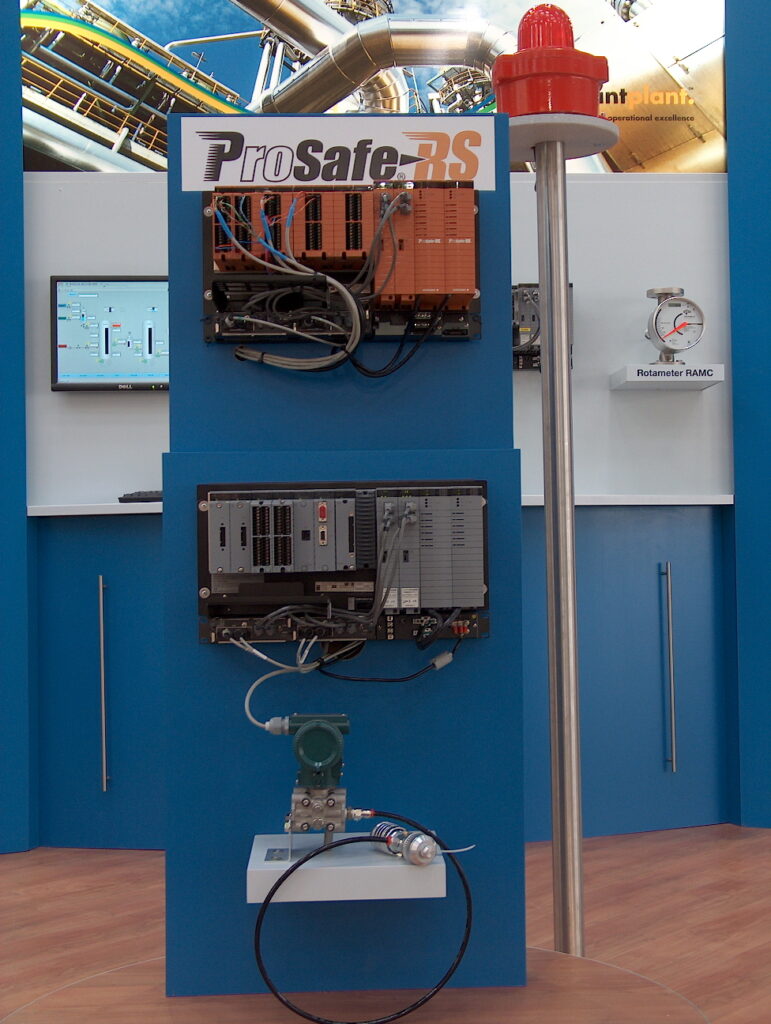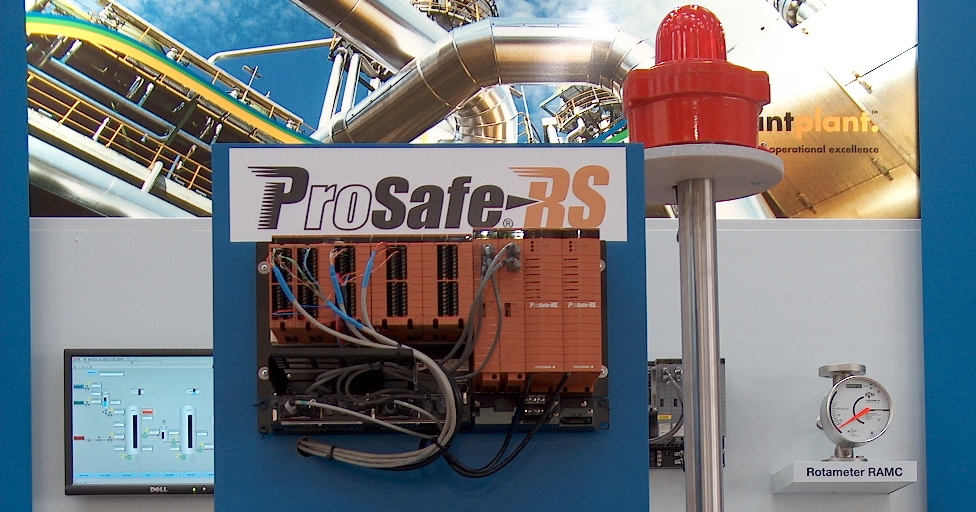ProSafe RS – How it all began
I’d like to take this opportunity to cast a look back at the year 2005. I was the project manager responsible for the Yokogawa booth at Interkama in Hannover (Germany) and tasked with organizing the presentation of our new ProSafe RS safety instrumented system. The SIS was still brand new and we wanted to celebrate it in style. On the eve of the exhibition, everything was finally ready and professionally printed texts had replaced the felt tip lettering on the panel of the safety control station (SCS).

The trade fair was a huge success and the stand with the SCS was permanently packed with visitors. No-one noticed that the demo SCS had only arrived the day before – at the very last minute – from another exhibition in Spain and that we’d had virtually no time to install and test it.
From newcomer to global player
ProSafe RS took off immediately and from then on there was no stopping its triumphal advance. The first systems were soon on their way to process plant operators. The convincing concept – integration of ProSafe RS in the CENTUM VP production control system coupled with mutually independent configuration tools and data transfer – remains unmatched by any other system. In particular, Yokogawa’s ability to manage projects on any scale worldwide was a crucial factor here. From the outset, Yokogawa set great store by global guidelines for the use of functional safety systems beyond mere hardware and software. Today, Yokogawa has a global network of TÜV certified experts. Functional safety thus begins with the very first meeting in Sales. I won’t bore you by listing every single standard in this blog post. You can find details here if you’re interested.
In the meantime, ProSafe RS has spent quite a few consecutive years as one of the world’s top 2 safety instrumented systems. According to the ARC Group’s Market Report, Yokogawa’s share of the SIS market amounted to 18.6% in 2016. Several thousand projects and several tens of thousands of safety controllers in action speak for themselves.
Functional safety in the age of cyber attacks
There’s one standard that I ought to mention nevertheless. Whereas safety instrumented systems (SIS) and related standards are often concerned with meeting functional safety requirements, the focus in recent years has increasingly shifted to cyber security. Yet protecting safety systems through a policy of isolation is not a solution here. You can’t turn back the wheel of time. That isn’t what any of the well-known standards are calling for, and the safety of the system as a whole is not increased as a result.
Back in 2010, the ISA Security Compliance Institute (ISCI) developed the ISASecure EDSA (Embedded Device Security Assurance) program. Both ProSafe RS (2014) and CENTUM VP (2015) have been certified to this standard.
Safety instrumented system becomes a safety lifecycle tool
A safety controller must be combined with functional safety management (FSM) in order to comply with the requirements of the risk reduction standard for process plants on the protection of health, the environment and financial assets. Safety lifecycle management with iDefine (TM) and ProSafe RS made its debut in 2016. This strong combination marked ProSafe RS’s transition from a safety controller to a safety lifecycle tool. iDefine is a powerful toolkit that provides simulation, design, functional testing and documentation capabilities for safety instrumented functions (SIF). For more information, see my blog post on functional safety management.
Twelve years on from the market launch of ProSafe RS my verdict is overwhelmingly positive and my expectations for the future are high. You’re always on the safe side with ProSafe RS.
Quick questions
To Thomas Bagsik,
Manager Technical Services at the harbor facilities at Marl Chemical Park,
Evonik Technology & Infrastructure GmbH.
[ot-caption title=”Mr. Bagsik in conversation with Mr. Schindler (2012)” url=”https://www.yokogawa.com/eu/blog/chemical-pharma/app/uploads/2017/12/Interview.jpg”]
Thomas Schindler of Yokogawa: Mr. Bagsik, in 2008 you became one of the first plant operators at Marl Chemical Park to introduce Yokogawa’s ProSafe RS safety controller. It hadn’t been on the market for very long at the time. Did you not have any reservations?
Thomas Bagsik: No, none at all. We’d already been using the Centum VP DCS for some time, and based on our experience with it I was confident that the SIS would also work trouble-free. And that’s exactly how it was. I myself prefer to trust in the benefits of new technologies than worry excessively about the risks. If you want to operate a plant safely and efficiently, that’s essential.
Thomas Schindler of Yokogawa: What do you consider to be the benefits of ProSafe RS?
Thomas Bagsik: First and foremost, there’s the time saving you get from fewer interfaces and not having to configure things twice. Since ProSafe RS is integrated in CENTUM VP, once you’ve configured the SCS (safety control station (safety PLC)), the integration in the PLC is also complete. There’s no longer any need to configure data exchange lists, alarms, etc. in the PLC, even though the configuration tools for CENTUM VP and ProSafe RS are completely independent of one another. That’s a decisive advantage for our plant, which is constantly evolving.
Thomas Schindler of Yokogawa: I’m pleased to hear that, of course. It’s time to make a wish. Seriously, what improvements would you, as a user, like to see in ProSafe RS and what are its drawbacks?
Thomas Bagsik: On the CENTUM VP human interface stations you can access the functional logic of the PLC at the click of a mouse. Unfortunately, that’s not so easy with ProSafe RS. That’s an area where the integration could be slightly better. Otherwise, configuring communication between the individual SCSs is rather complicated. Maybe some of those wishes will come true for in time Christmas 2018.
Thomas Schindler of Yokogawa: Thank you for talking to us. I wish you a peaceful – and safe – season of goodwill!
Feel free to write a comment and discuss them with us!




